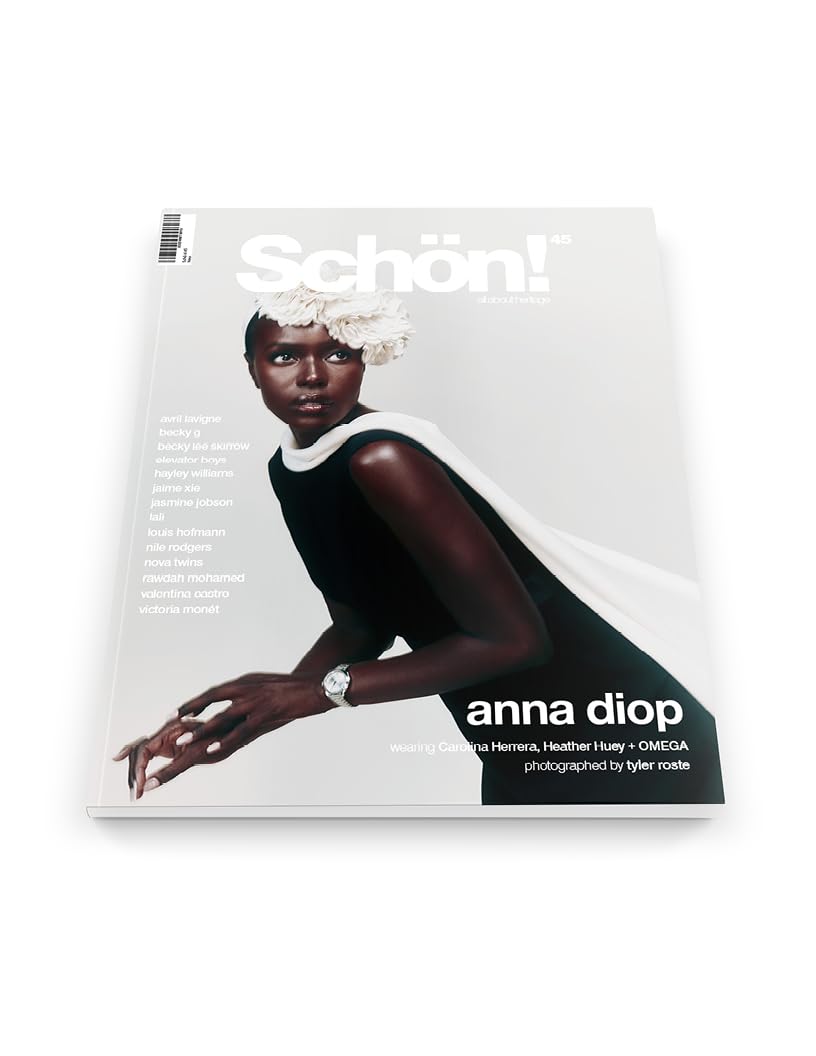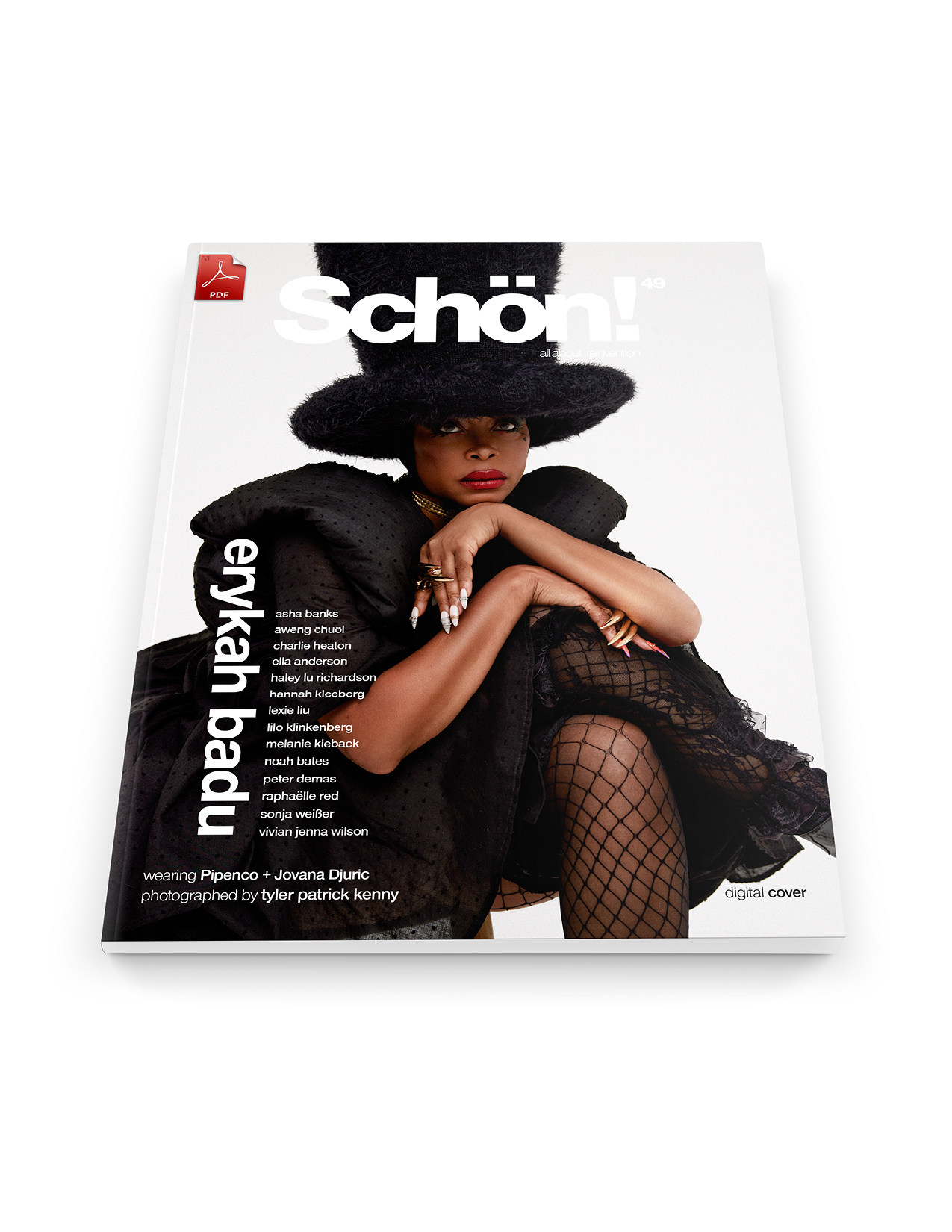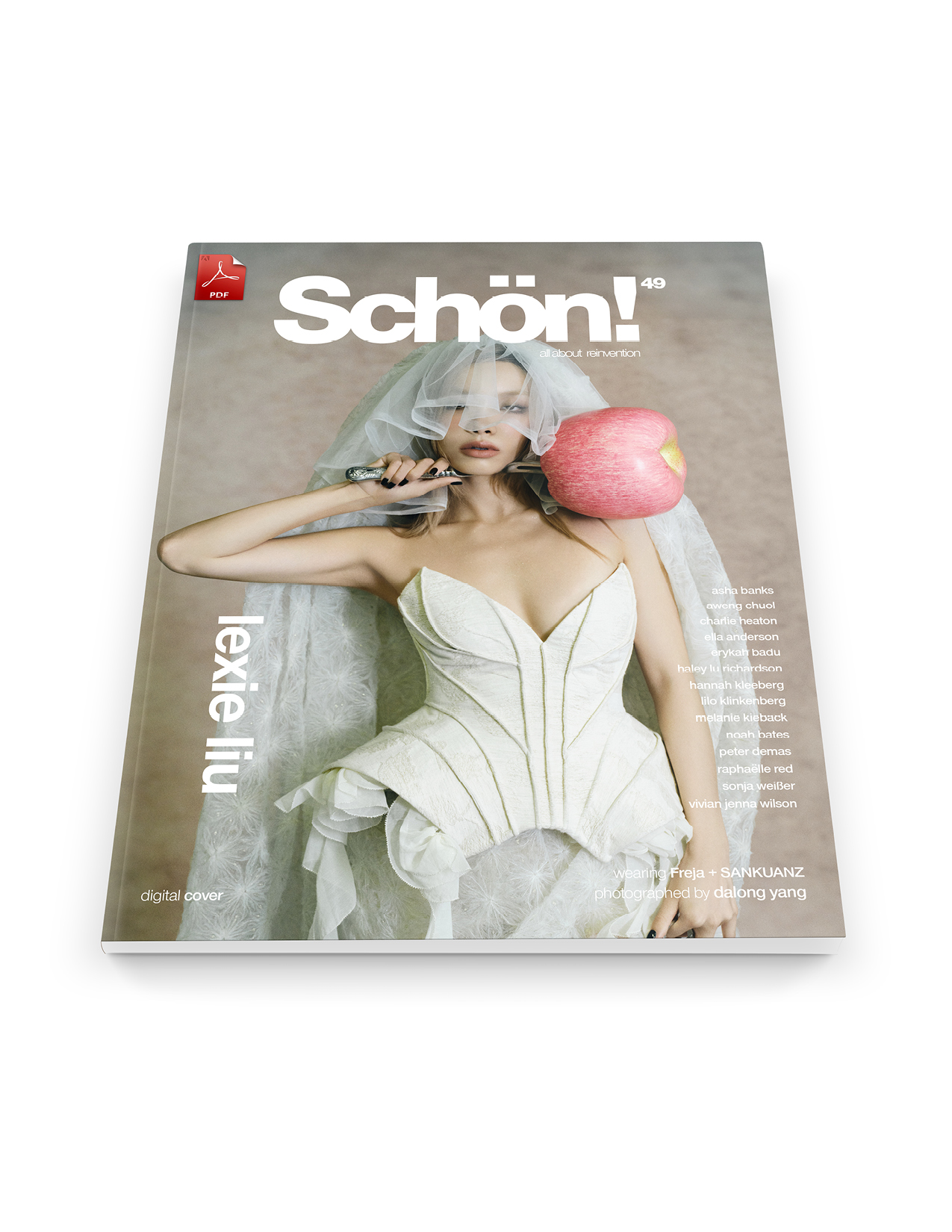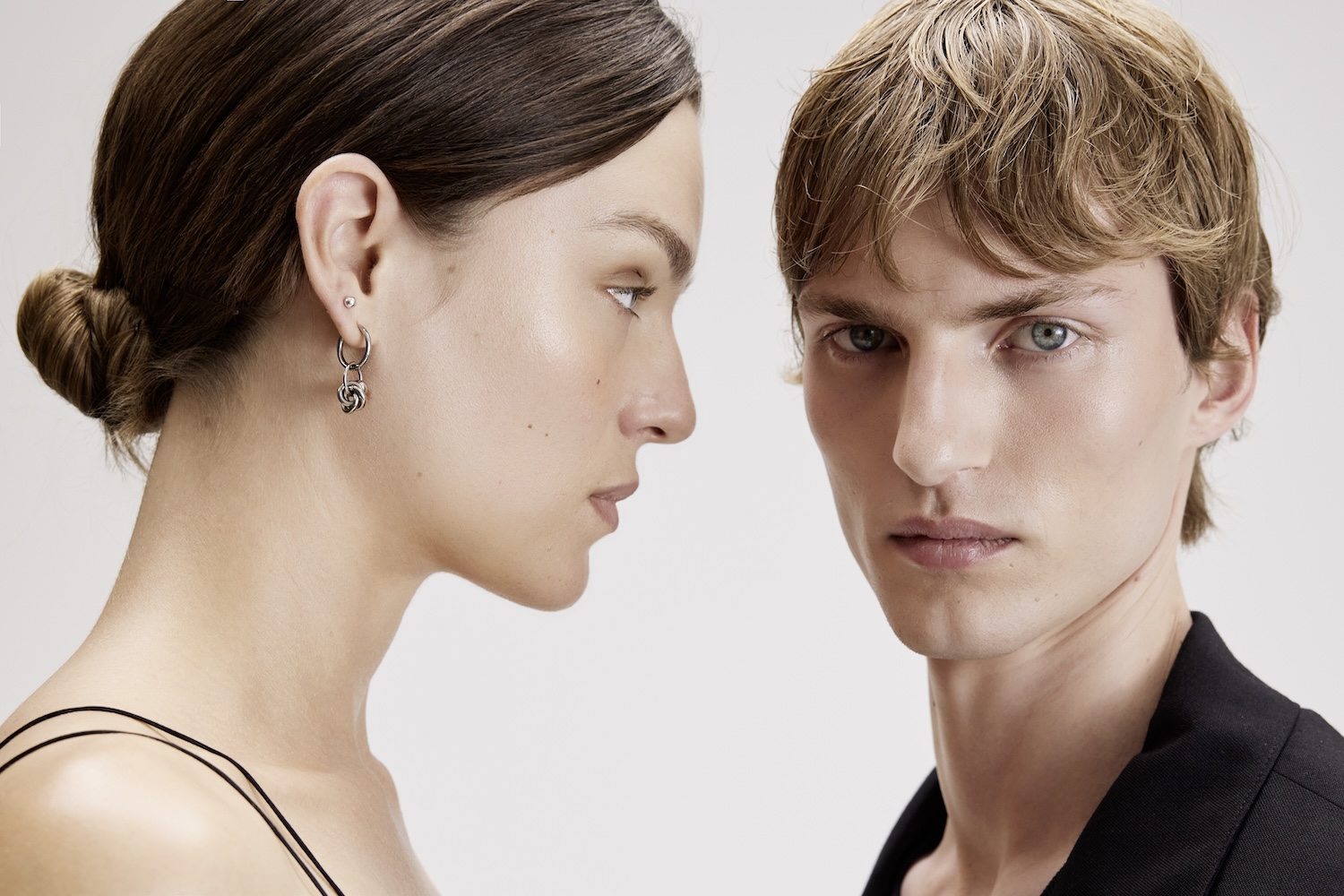
Is there anyone who knows hair better than Antoinette Beenders? As Aveda’s Global Senior Vice President of Professional Artistry, she’s been heralded as a force in the hair industry — so much so that she’s even crafted many hair collections, her newest aptly named Astral. A culmination of Beenders’ years of work in the hair world, Astral ushers in a new space for hair artistry as Beenders aims to create alternate dimensions by leaning further and further into three-dimensional hair. And with that, the next collection of Astral — Astral 2.0 — has recently been released (and nominated for the British Hairdressing Awards).
The 2.0 collection is a collaboration with artist Ed Maximus which sees him and Beenders work together to mix real models and hair and juxtapose them with AI imagery to mimic a similar feeling to that of a dreamy, unseen world. It’s a technique that builds on her “ridge” technique, which she originally crafted for Iris van Herpen’s Paris couture show last summer, she’s used the same inspiration for New York Fashion Week at the Bad Binch TongTong presentation.
Schön! chats with Aveda’s Antoinette Beenders to discuss creating Astral, the new 2.0 collection, where she sees the hair industry evolving in the future, and more.
What was the initial inspiration behind the Astral 2.0 collection, and how did the concept of out-of-body experiences shape its development?
The initial inspiration behind the Astral 2.0 collection was the exploration of out-of-body experiences and how they influence one’s perception of reality. The goal was to merge physical hair artistry with a futuristic AI-driven environment and wardrobe, creating a collection that translates the otherworldly essence of these experiences into tangible, artistic expressions.
How did your collaboration with multidisciplinary artist Ed Maximus come about, and what was the creative process like integrating AI-generated imagery with traditional hair artistry?
The collaboration with multidisciplinary artist Ed Maximus came from a shared vision of pushing the boundaries of traditional hair artistry by incorporating modern technology. I have been following Ed’s work on Instagram for a while, and as a creative, I’m always looking to push limits in both hair and photography. When we finally connected, it was a perfect match. We have great respect for each other’s work and love creating together.
We first collaborated on Astral, a collection where the hair was inspired by a technique I developed for the Iris van Herpen Couture show last summer, which I pushed to the limit. Ed then added his otherworldly shapes, and that’s how Astral was born. After its success, we continued with Astral 2.0, where we experimented more with colour, texture, shapes and even motion to bring to life the technical and detailed couture hairstyle backstage for the show.

Could you explain how the ridge technique you developed for the Paris couture show has evolved in Astral 2.0? What new elements or techniques have you introduced?
For Astral 2.0, I expanded on the original collection by incorporating more movement in the hair, experimenting with new shapes, and adding richer textures and vibrant colours.
What were some of the biggest challenges you faced while creating Astral 2.0, especially when blending real models with AI-generated elements? How did you overcome them?
One of the biggest challenges faced while creating Astral 2.0 was seamlessly blending real models with AI-generated elements. It was a delicate balance to ensure that the AI components complemented, rather than overshadowed, the physical hair design. This is where the collaboration with Ed was so crucial. We had to trust each other’s artistry and allow space for each of us to bring our best. There was quite a bit of back-and-forth, but in the end, we’re both thrilled with the results.

Your celestial-inspired hair look for Bad Binch TongTong at New York Fashion Week received a lot of attention. Can you share more about the inspiration and execution of this look?
Terrence’s designs for the Bad Binch TongTong show were a major source of inspiration for me, especially since he was captivated by the fin designs I had created for Iris van Herpen. The show, held in a church and centred around celestial beings descending to our world, called for a unique, otherworldly vibe for the hair. We sculpted the models’ hair into vertical fins on either side of their heads, giving an almost alien-like appearance.
To create the look, we started by prepping each model’s hair with custom Aveda products to ensure a healthy base. For finer hair, we used Aveda Invati Ultra Advanced™ Thickening Foam to plump the strands. For models needing extra hydration, we applied Nutriplenish™ Styling Treatment Foam, and for hair requiring repair, we used Botanical Repair™ Strengthening Leave-In Treatment.
We then pulled it away from the face and flattened the sides with Aveda Control Force™ Firm Hold Hair Spray, brushing and blow-drying tightly to create a square-like shape. We lifted two small sections at the top, above the parietal ridge, clamping them vertically with a small straightening iron to create a 3D effect. This allowed the back of the hair to flow freely, which was perfect since Terrence had installed 16 giant fans to make the hair fly in the wind.
What trends do you predict will dominate the hair artistry scene in the next few years? How do you plan to continue pushing boundaries in your future collections?
AI will undoubtedly play a much bigger role in all our lives moving forward, but as artists, it’s crucial that we maintain a strong element of artistry in our work. While the hair industry is rooted in craftsmanship, there are also exciting opportunities to explore and push artistic boundaries. I like to stay open-minded and curious, always seeking out other creatives who share my passion for beautiful imagery. Collaborating with like-minded artists allows us to join forces and create innovative new collections.

Reflecting on your journey as a hair artist, how has your artistic vision and approach to hair design evolved over the years?
I began my career as a hairdresser at a very young age, working diligently alongside some of the best hairdressers in the world, including various clients, editorial work, hair shows, and fashion shows. As I transitioned into a creative director role, I honed my skills and sharpened my eye for photography and multimedia. Now, I blend my expertise in hairdressing with creative direction, allowing me to experiment more with the overall outcome.
What advice would you give to aspiring hair artists who are looking to innovate and make a mark in the industry? How can they balance traditional techniques with modern technology?
I say try it all, experiment with everything and embrace new ideas. However, make sure to master the basics first and ensure you have a strong foundation, then start pushing your boundaries and exploring innovative approaches.

Learn more at aveda.com.
hair concept. Antoinette Beenders supported by Allen Ruiz + Ian Michael Black
multidisciplinary artist. Ed Maximus
make up. Walter Obal
production. Code Productions









































































































